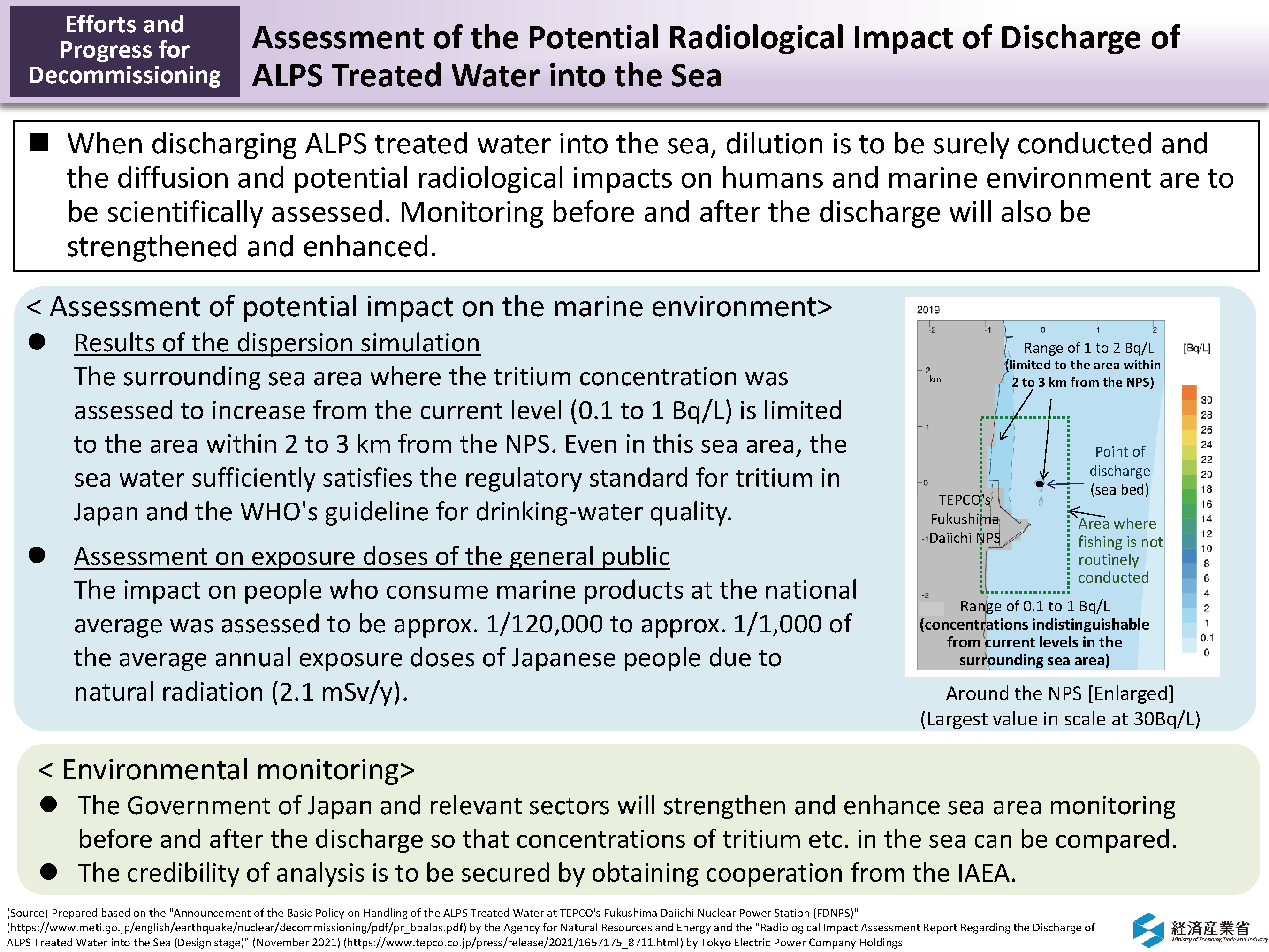Assessment of the Potential Radiological Impact of Discharge of ALPS Treated Water into the Sea
Following the basic policy, which the Government of Japan announced in April 2021, Tokyo Electric Power Company Holdings conducted assessment on the radiological impact when discharging ALPS treated water into the sea, in accordance with internationally recognized methods (as found in the International Atomic Energy Agency (IAEA) Safety Standard documents and International Commission on Radiological Protection (ICRP) recommendations). As a result, it was found that the impact on humans and marine environment will be negligible enough.
■ Results of the dispersion simulation in the sea (using the meteorological and hydrological data for 2019; annual average)
* The area where the tritium concentration in seawater in the surrounding area was assessed to increase from the current level (0.1 to 1 Bq/L) is limited to the area within 2 to 3 km from the NPS.
* There were some points near the point of discharge where the tritium concentration was assessed to be around 30 Bq/L, but the concentration would decrease promptly in and around those points. The tritium concentration of 30 Bq/L is still far below 10,000 Bq/L, the WHO Guidelines for drinking-water quality.
■Results of potential radiological impact on human and plants and animals
* The impact on persons who consume marine products at the national average was assessed to be approx. 1/120,000 to approx. 1/1,000 of the average annual exposure doses of Japanese people due to natural radiation (2.1 mSv/y).
* The impact on plants and animals (flatfish, crabs, and brown algae) was assessed to be approx. 1/60,000 to approx. 1/120 of the standard values that may cause an impact on living organisms as specified by ICRP.
The Government of Japan and relevant sectors will strengthen and enhance sea area monitoring before and after the discharge of ALPS treated water into the sea, so that concentrations of tritium etc. can be compared. In conducting sea area monitoring, the credibility of analysis capabilities is to be secured by obtaining cooperation from the IAEA.
(Source) Prepared based on the "Radiological Impact Assessment Report Regarding the Discharge of ALPS Treated Water into the Sea (Design stage)" (November 2021) (https://www.tepco.co.jp/press/release/2021/1657175_8711.html) by Tokyo Electric Power Company Holdings
- Included in this reference material on March 31, 2022

